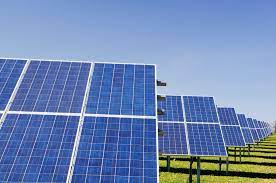
Not only is it possible to install solar panels at your house or company, but there are other ways you can go solar. To share the benefits and costs of solar installation, people across the country are participating in solar community projects.
What is COMMUNITY SOLAR?
Community solar is solar photovoltaic (PV) projects (or panels) with multiple owners or subscribers. This includes homeowners, renters and consumers, and businesses and non-profit organizations.
The shared solar panel system allows people to subscribe or buy into it. They then generate solar power for themselves and receive credits on their utility bills for any energy they produce in net Metering. The more they invest in the system, the greater their energy, credit, and savings.
Community solar projects are also known as solar farms, solar co-ops and community solar gardens. These projects can be managed by the state, local governments, municipal utilities or investor-owned utilities. Community solar projects will continue to increase in popularity, regardless of their name or who they are led by.
Be careful not to confuse group purchasing with community solar. This is where many home- or business-owners come together to buy solar panels at bulk prices. Because the solar panels are not shared, this is not community solar.
BENEFITS OF COMMUNITY SOLAR
CUSTOMER BENEFITS
Customers can enjoy a variety of benefits from solar community projects. Take this example:
- Community solar customers can save money on their electricity bills by using.
- Community solar allows renters to get solar power without paying for it. Some homeowners may not have the right roof, wall or ground space for solar panel installation.
- You can take your solar savings with ease if you move. Homeowners must sell, uninstall, and transport their solar panels if they move. All you need to do to get involved in solar community projects is update your address.
- Community solar is more affordable. To purchase a private solar system, you will need to have the financial ability to invest substantial amounts or obtain a loan. Community solar projects have a lower financial barrier because you can choose how much of the share you want or pay a monthly fee.
- Maintenance is not something you need to worry about. You are responsible for installing solar panels on your property. Also, cleaning up and maintaining them is your responsibility. All of this is handled by a project manager for solar community projects.
- Federal solar tax credits are available to shareholders. You can deduct as much as 26% from your investment when you file your taxes next year. This benefit is not available to subscribers to the solar project.
- Most likely, you have the option of selling or donating your share. There is usually no long-term commitment. This is especially important if you move outside the community’s solar project boundaries or you want to build your solar panel system.
UTILITY BENEFITS
Community solar projects are not just for customers. Federal tax credit.
Subscription: A subscription to a community-based solar project requires a monthly fee rather than an upfront investment. Although the monthly fee will be greater than the amount you save on your electricity bill, the fees may increase.
Both options can help you reduce your electricity bills, but the best choice will depend on your particular situation.
Although the ownership model is more cost-effective, you will need to invest upfront capital. You will also have to sell your shares if you move beyond the project’s boundaries. Subscriptions are more suitable for people who don’t have the capital to invest upfront or plan on moving away from the area in the future. You can cancel the subscription at any time.
ON-SITE VS. OFFSITE
You can choose to have solar community projects on-site or offsite.
- Real estate developers create on-site community solar projects as part of residential and commercial projects. On-site projects produce power distributed to customers via a private system instead of the grid. This allows them to cut down on distribution and transmission fees. Only those who live in these communities and rent or own their property can benefit from the solar power generated.
- These offsite community solar projects rely on the local electricity grid. Offsite projects can serve more people because they don’t have to be restricted to one community. You can also move with no restrictions to your subscription or ownership, as long as you stay within the project’s borders. Your savings will depend on the local grid, so they may not be as great as those offered by on-site projects.
